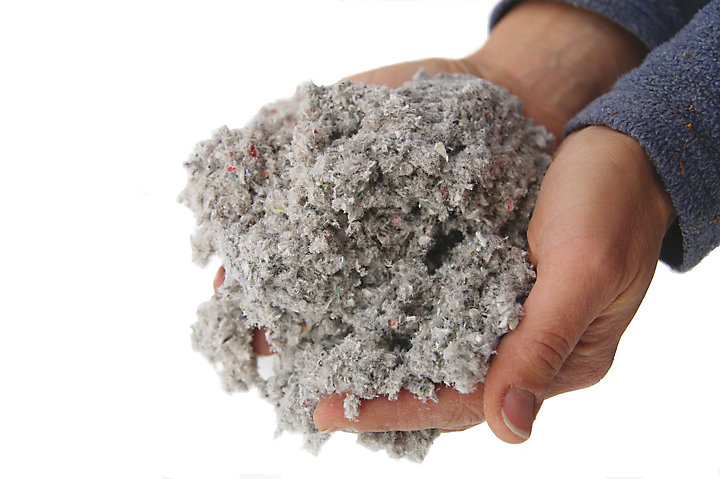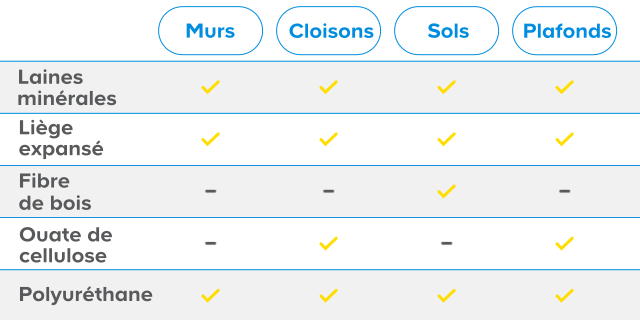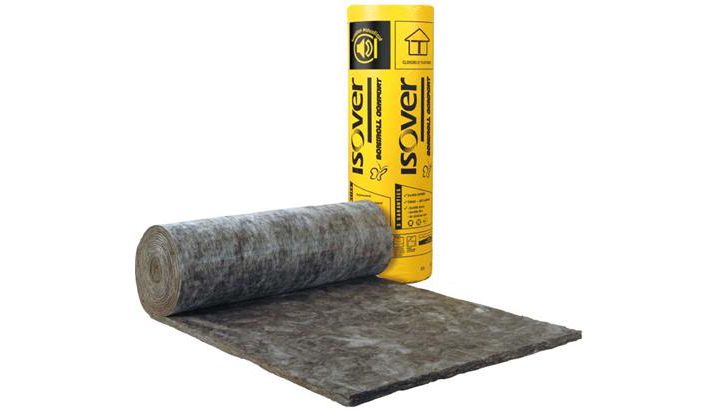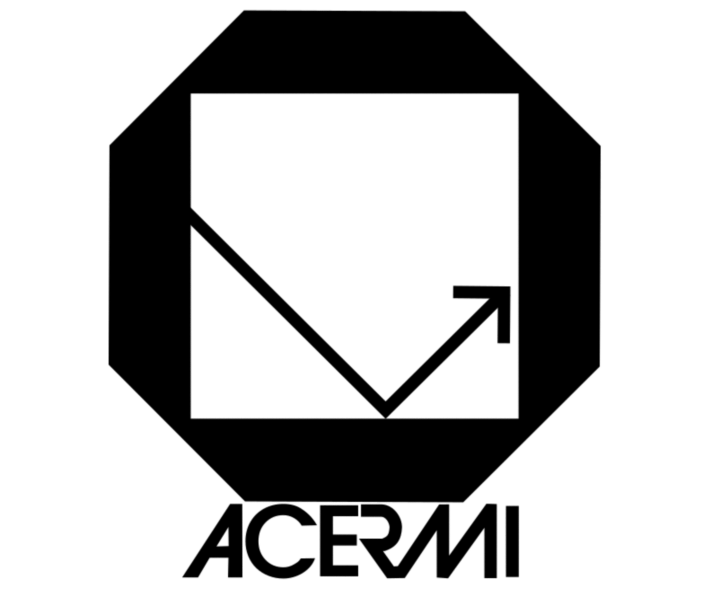Choosing a sound insulation
https://www.castorama.fr/idees-et-conseils/choisir-un-isolant-phonique/CF_CPRD_npcart_100351.art
collapsed,Tips by room
Summary of this section
The choice of materials for sound insulation
Phonic insulators of natural origin with synthetic insulators, the choice is vast. The selection of an insulating material depends both on the surface to be insulated and the desired acoustic attenuation. Here are our tips for calculating the sound insulation coefficient you need and evaluating the performance of sound insulators.

expanded,Materials for sound insulation
The different acoustic insulators
Insulators absorb sound to improve the acoustic comfort of your home.Choose your material according to the nature of the noise and the type of surface to be insulated (wall, partition, floor or ceiling).

Depending on the material chosen, the acoustic performance differs.


Wool of mineral origin
The fibrous mattress of rock wool and glass wool traps airborne noise as well as impact noises. However, wools need to lay a thick often important, reducing the space to live.
Expanded cork in plates
Suitable for all surfaces, it combines good sound insulation with excellent thermal insulation.
Wood fiber
This natural fiber is ideal for soil insulation.
Cellulose wadding
Lightweight, it is ideal for partitions and false ceilings.
Polyurethane foam
Less insulating than mineral wool, it is much lighter and not very thick, which allows it to be used in many situations.
45 dB so that the interior sound level does not exceed 25 dB.
The good info
Rigid polyurethane (PU), extruded polystyrene (PSX) and expanded polystyrene (EPS) have good thermal insulation performance but do not reduce noise.
Calculate the ideal sound attenuation level
For external noise perceived inside the house, the acoustic regulation requires not to exceed a noise level of 35 decibels (dB) during the day and 30 dB at night.
For an outside sound level of 70 dB and a desired interior sound level of 30 dB, the minimum sound attenuation must be 70 dB - 30 dB = 40 dB.
For your comfort, add an additional 5 dB, which is 45 dB of sound insulation. Your sound insulation must therefore display sound attenuation performance of 45 dB so that the interior sound level does not exceed 25 dB.
The good info
An Acoustician, an acoustics professional, can make a precise diagnosis of the sound level of your home in order to determine the sources of noise and the insulation solutions to be implemented.
Evaluate the performance of the insulation
The ability of an insulating material to attenuate noise is measured by comparing the sound pressure before and after insulation is applied to a wall. Depending on the nature of the noise, there are 2 sound reduction indices, expressed in decibels (dB): the Rw index for airborne noise and the Lw index for impact or impact noise.

The higher these indices, the more the insulation is able to reduce the sound pressure and the perceived decibels.
Trust the ACERMI Label, which certifies the compliance of the material with the standards in force.
Choose also materials whose performances have been evaluated by approved laboratories such as CSTB, CTBA, LNE, CEBTP ...
For all your questions, our experts in store are at your disposal and accompany you in your projects.
